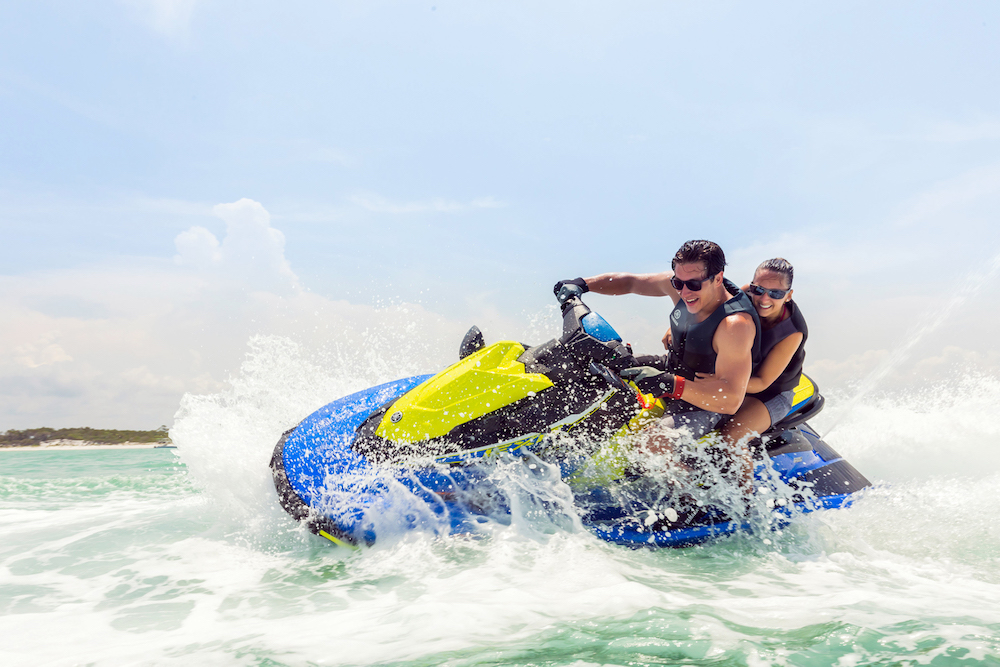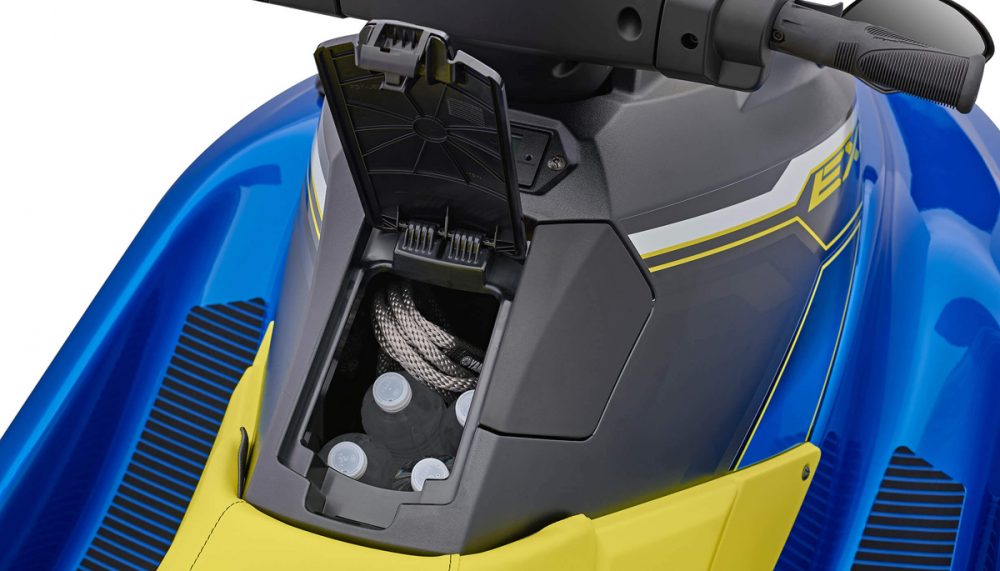Yamaha WaveRunner EXR Offers Entry-Level Performance
Yamaha builds a pocket-rocket EX fitted with the TR-1 HO engine, modified jet pump and the ultra-light NanoXcel 2 hull and deck.
Yamaha pumps up the performance of its WaveRunner EX series with the introduction of the new EXR model, a WaveRunner certain to take the fight to Sea-Doo and Kawasaki Jet Ski in the rec-light category, where it will offer affordable high-performance.

Lighter and more powerful than the standard EX models, the WaveRunner EXR offers outstanding performance for the rec-light PWC category.
The WaveRunner EXR ($9,299) is more powerful and lighter in weight than standard EX models, a formula intended to boost acceleration and top-speed performance. To increase power, Yamaha dropped the three-cylinder, 1,049cc TR-1 HO engine into the EX hull. This high-output version of the TR-1 makes about 10 percent more power than the standard TR-1 engine, according to Yamaha – a bump to approximately 110 horsepower from 101 horsepower (Yamaha does not publish horsepower figures). Yamaha says the power gain is accomplished in the engine control unit (ECU), which is programmed permit 8000 rpm in the HO engine, compared to 7300 rpm in the standard TR-1. To take full advantage of the added power the EXR is also fitted with a new top-loader intake grate that better feeds water to the impeller and a 40mm jet pump extension that increases acceleration response. With a single rider the EXR will offer a top speed of about 54 MPH, compared to about 50 MPH for the WaveRunner EX Deluxe.

The 143-horsepower Yamaha TR-1 HO engine powers the EXR model. The seat base is easy to remove for engine service.
The EXR hull and deck are molded with Yamaha NanoXcel 2, the lightest composite offered by Yamaha and the same material used in its highest performance WaveRunner, the GP1800. As a result, the EXR weighs just 540 pounds, or about 60 pounds less than an EX Deluxe model, which should benefit its acceleration performance.
For added maneuverability in close quarters the WaveRunner EXR is equipped with Yamaha’s RiDE dual throttle system that combines electronic throttle and shift control in a single-hand lever on the left handlebar grip. When the EXR is started, the system defaults to a neutral setting for the reverse bucket. Squeezing the left-hand lever instantly engages reverse thrust and also controls the throttle in reverse. Releasing the left-hand lever takes the system back to neutral. Squeezing the right-hand lever engages forward thrust and throttles the engine normally. The RiDE lever also acts as a decelerator that can be engaged at any speed but is most handy for slowing down when some urgency is required. The RiDE control over-rides the left-hand throttle, so it’s possible to apply full power in reverse while the right-hand throttle is still engaged.

A top-loaded intake grate and extended jet pump nozzle are exclusive to the EXR and help boost throttle response.
The WaveRunner EXR shares most other features with the rest of the WaveRunner EX line, that includes the EX Deluxe, the EX Sport, and EX, which are all powered by the 130-horsepower version of the Yamaha’s TR-1 marine and features a generous 13-gallon fuel tank. The hull design delivers excellent stability for two or three-up riding and towing.

The WaveRunner EXR features a handy glove box big enough to hold ride necessities.
The EX Deluxe ($8,799) features the RiDE system, dual mirrors, a flip-down re-boarding step, and two-tone deck mats. The EX Sport ($7,799) has a mechanical reverse system but all of the other features of the EX Deluxe. The base EX model ($6,799) offers only the essentials, and does not include reverse or mirrors.
See listings for the Yamaha WaveRunner EXR.
| Specifications | |
|---|---|
| Length | 10'3'' |
| Beam | 3'7'' |
| Rider capacity | 1-3 |
| Dry Weight | 540 lbs |
| Displacement | 1049cc |
| Fuel capacity | 13.2 gal. |
| Storage capacity | 7.7 gal. |

















